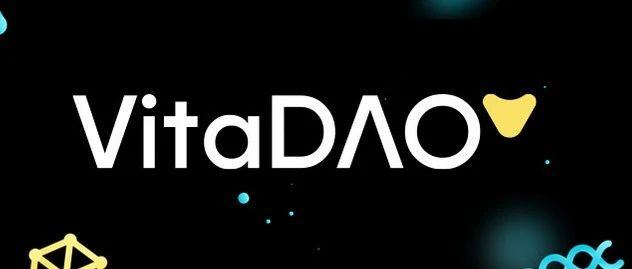Decoding DeFi's Governance Goldmine: How Market Signals and Incentives Drive User Retention
- DeFi market to hit $78.49B by 2030, driven by Solana and Bitcoin restaking. - DAOs and token incentives boost governance but face concentration risks in voting power. - TVL transparency and cross-chain integration enhance user retention through seamless asset movement. - Mobile-first design and community engagement drive growth in APAC/Africa, reducing acquisition costs.
The DeFi market is no longer a niche experiment—it’s a $78.49 billion juggernaut by 2030, driven by protocols like Solana and Bitcoin restaking services [1]. But what’s fueling this growth? The answer lies in the interplay of governance models and user retention strategies. Let’s break down how market signals and operator incentives are reshaping the landscape—and why investors should pay attention.
The Governance Revolution: DAOs and Token Incentives
Decentralized Autonomous Organizations (DAOs) have become the bedrock of DeFi governance. By distributing voting rights via governance tokens, platforms like Uniswap and Aave aim to democratize decision-making. However, the reality is more nuanced. Studies reveal that tokenized voting rights are often concentrated in the hands of a minority, creating a “timocratic” system where a few hold disproportionate influence [2]. This concentration risks undermining trust, a critical factor in user retention.
Yet, when done right, token incentives can be a game-changer. For example, yield farming and liquidity mining programs have proven effective in attracting users. Platforms offering rewards for staking or providing liquidity see higher engagement, as users align their interests with protocol goals [3]. The key is balancing short-term incentives with long-term sustainability. Arbitrum’s Long-Term Incentive Program (LTIPP) is a case in point: it rewards users for sustained participation, ensuring they remain active even after initial incentives fade [4].
Market Signals: TVL, GMV, and the Power of Transparency
Market signals are the lifeblood of DeFi. Total Value Locked (TVL) remains the gold standard for measuring protocol health, but it’s not the whole story. Gross Merchandise Volume (GMV) and protocol revenue are gaining traction as complementary metrics [5]. For instance, liquid staking protocols like Lido now manage $34.8 billion in TVL, a testament to their role in capital efficiency [1].
Transparency is another signal that can’t be ignored. Users flock to platforms with clear governance frameworks and real-time analytics. SwissCheese, a DeFi trading platform, boosted retention by offering real-time data tools that empower users to optimize their strategies [6]. In a space where trust is scarce, transparency isn’t just a feature—it’s a competitive advantage.
User Retention: The Cross-Platform and Mobile-First Edge
Retention in DeFi isn’t just about incentives—it’s about experience. Cross-platform integration is a standout strategy. Platforms that allow seamless asset movement across chains see a 45% better retention rate [3]. Imagine a user who can trade on Ethereum , stake on Solana, and lend on Aave—all without switching apps. That’s the future of DeFi, and it’s already here.
Mobile-first design is equally critical. With 45% of DeFi users in APAC and Africa, where mobile adoption is rampant, platforms that prioritize mobile usability reduce acquisition costs by 25% [3]. Community-driven growth strategies, like Discord and Telegram engagement, further amplify retention. Projects with active communities report 3x higher retention and 2.8x more advocacy [4].
The Risks and the Road Ahead
No investment is without risk. Token concentration and low voter turnout remain persistent challenges. A 2025 study found that 63% of DeFi TVL is on Ethereum, but governance participation is still low [1]. Regulatory uncertainty also looms, though the CLARITY Act of 2025 is a step toward clarity [5].
The path forward? Innovation in governance design. Sequential auction mechanisms and hybrid intelligence systems are emerging to address control dynamics [3]. These models aim to balance algorithmic efficiency with human oversight, ensuring ethical and transparent operations.
Final Takeaway
DeFi’s future hinges on its ability to blend governance innovation with user-centric design. For investors, the sweet spot lies in platforms that:
1. Balance token incentives to avoid concentration while rewarding long-term participation.
2. Leverage cross-chain and mobile-first strategies to enhance accessibility.
3. Prioritize transparency through real-time data and community engagement.
The market is still evolving, but one thing is clear: DeFi isn’t just about code—it’s about people. And in this space, the ones who listen to their users will win.
Source:
[1] Decentralized Finance Market Size & Share Analysis
[2] The distribution and exercise of tokenised voting rights
[3] User Acquisition Trends - 2025 Report: DeFi, Crypto
[4] Incentive Program Assessments & Recommendations
[5] Decentralized Finance (DeFi) Projects: A Study of Key
[6] DeFi and Blockchain solution development | Case Study
Disclaimer: The content of this article solely reflects the author's opinion and does not represent the platform in any capacity. This article is not intended to serve as a reference for making investment decisions.
You may also like
Decoding VitaDAO: A Paradigm Revolution in Decentralized Science

Mars Morning News | ETH returns to $3,000, extreme fear sentiment has passed
The Federal Reserve's Beige Book shows little change in U.S. economic activity, with increasing divergence in the consumer market. JPMorgan predicts a Fed rate cut in December. Nasdaq has applied to increase the position limit for BlackRock's Bitcoin ETF options. ETH has returned to $3,000, signaling a recovery in market sentiment. Hyperliquid has sparked controversy due to a token symbol change. Binance faces a $1 billion terrorism-related lawsuit. Securitize has received EU approval to operate a tokenization trading system. The Tether CEO responded to S&P's credit rating downgrade. Large Bitcoin holders are increasing deposits to exchanges. Summary generated by Mars AI. The accuracy and completeness of this summary are still being iteratively improved by the Mars AI model.

The central bank sets a major tone on stablecoins for the first time—where will the market go next?
The People's Bank of China held a meeting to crack down on virtual currency trading and speculation, clearly defining stablecoins as a form of virtual currency with risks of illegal financial activities, and emphasized the continued prohibition of all virtual currency-related businesses.
